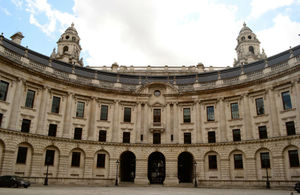Government redefines treasure to increase protection for archaeological finds
Move will ensure more significant artefacts are saved for the public

-
For the first time, the official treasure definition will not be based solely on the material qualities of an artefact
-
Changes will make the treasure process more transparent and efficient for museums and the public
More of the most important archaeological finds will be protected for the public under plans to develop a new definition of treasure, Culture Minister Caroline Dinenage has announced.
The move is one of the biggest changes to the Treasure Act since it came into effect nearly 25 years ago.
Under the existing definition, objects are designated as treasure if they are found to be over 300 years old, made of gold or silver or found with artefacts made of precious metals. Once officially identified as treasure, artefacts become the property of the Crown and are available for acquisition by local or national museums to go on public display.
However this historic view of treasure, which stretches back to the medieval period, does not capture the full extent of important finds reported to the scheme in the twenty-first century. The growing popularity of metal detecting since the inception of the act in 1996 has brought to light an increasing number of finds from Roman Britain that do not meet the current treasure criteria because they are often made from bronze and not precious metals.
Some items of national importance have been lost to the public or at risk of sale into private collections.
Recent finds include a bronze-enamelled horse brooch from between the second and fourth century AD which resembles earlier designs of the Iron Age period. As a rare example from this era, the national and local significance of this object could be recognised under a new definition of treasure. However, when it was discovered earlier this year, the brooch was not recognised under the Treasure Act. Thanks to the generosity of the finder in this instance, the brooch is currently on display at the Collection at Lincoln, however the planned proposals published today will secure the future of objects like this one.
Another exceptionally rare Roman figurine wearing a cloak known as the Birrus Brittanicus would also have been lost to the public. The figurine was found near Chelmsford in 2014 but, despite being an extremely unusual example of a British character being depicted in Roman portable art, the aretfact’s copper alloy composition did not meet the current definition of treasure. Due to a deferred export licence delaying the sale, Chelmsford City Museum were able to raise the funds to purchase the figurine to display for the local community.
Under the new plans announced today, a new definition will be developed to ensure that major finds can be designated as treasure if they are historically or culturally significant. This will be the first time the official treasure definition will not be based solely on the material qualities of an artefact. This will allow local and national museums to acquire more objects of national importance for public collections.
Culture Minister Caroline Dinenage said:
The search for buried treasures by budding detectorists has become more popular than ever before and many ancient artefacts now see the light of day in museums’ collections.
However it is important that we pursue plans to protect more of our precious history and make it easier for everyone to follow the treasure process.
Finders, landowners, museums and members of the public were invited to comment on the proposals in a consultation and their views informed the government response published today. The changes will bring the treasure process into line with other important legislation to protect cultural heritage and collections, including the listing process for historically significant buildings and the export bar system.
A specialist research project running next year will inform the new definition and there will be opportunities for detectorists, archaeologists, museums, academics and curators to contribute to options in development.
As a result of the public consultation, the government will also introduce new measures to improve the experience of the treasure process which include a new time limit to streamline some stages of the process, limiting the number of times the Treasure Valuation Committee can review a case and developing a mechanism to return unclaimed rewards to museums.
Michael Lewis, Head of Portable Antiquities Scheme and Treasure at the British Museum, said:
The British Museum’s Portable Antiquities Scheme (PAS) has been essential to the working of the Treasure Act 1996 since its implementation in 1997 and the British Museum, alongside our colleagues in Wales and Northern Ireland, in the effective administration of Treasure. We are very proud that so many important archaeological finds have been acquired by museums across England, Wales and Northern Ireland for the public to learn about and enjoy. We very much welcome working with the DCMS as it takes forward its work to reform Treasure law to protect our shared heritage and encourage best practice amongst finders.
Roger Bland, Chair of the Treasure Valuation Committee, said:
I welcome the publication of the Government’s response to the Review of the Treasure Act, which contained a wide range of proposals intended to build on the great success of the Act. The public response to the Review was very substantial and has raised issues, such as those surrounding the definition of Treasure, which require further work to ensure the most important finds can be protected. This document marks an important step forward in transforming the treasure process so that it continues to meet the aims of the Act. The Treasure Valuation Committee looks forward to working with the DCMS on these.
The full government response to the consultation is available here